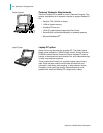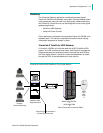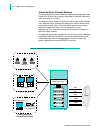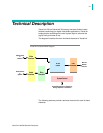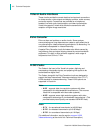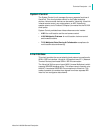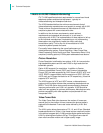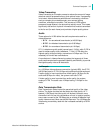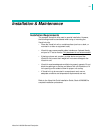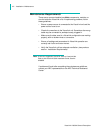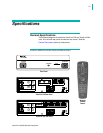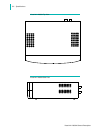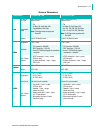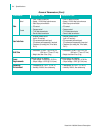
Technical Description 3-5
VisuaLink 128/384 General Description
Video Processing
Video Processing is a complex process to reduce the amount of image
data that must be processed on any given picture frame. If processing
is not used, videoconference performance is reduced by conditions
such as complex picture backgrounds, poor camera lighting
conditions, and object movement. This ensures a H.320 system
processes image objects in the picture that actually move. This lowers
significantly the amount of picture information that must be transmitted
to the far end (for each frame) and provides a higher quality picture.
Audio
Three options for H.320 define the audio requirements used for a
videoconference:
•
G.711
- for narrowband transmission (at 48-56 Kbps)
•
G.722
- for wideband transmission (at 48-56 Kbps)
•
G.728
- for narrowband transmission (at 16 Kbps)
G.711 is telephone quality audio (narrow band - 3 KHz), while G.722 is
used for stereo quality audio (wideband - 7 KHz). G.728 offers the
highest quality audio providing a narrow band 16 Kbps rate. This is
necessary for low bit rate transmissions.
A manufacturer’s videoconferencing system that supports all three
audio requirements has the greatest capability and flexibility to provide
the highest quality video at all data rates.
for Example:
In a 128 Kbps videoconference connection (typically BRI), the G.722
(48-56 Kbps rate) or G.728 (16 Kbps rate) options would be employed.
If audio quality is more important than video quality (48 Kbps for the
audio and 80 Kbps for video), the system could use G.722.
If video quality is more important than audio quality, the system
employs G.728. The audio uses 16 Kbps leaving 112 Kbps for the
video.
Data Transmission Rate
Data Transmission Rates impact the perceived quality of the video
picture. The higher the data rate the better the video quality. At T1
speeds (1,536 Kbps) the video quality will be best. However, many
connections will not use this rate because of cost. In today’s systems,
some users connect at the 768 Kbps rate as a trade-off between high
quality video and cost. Most use the 384 Kbps rate. The 128 Kbps rate
is becoming more widely used with the increased availability of ISDN
service.




